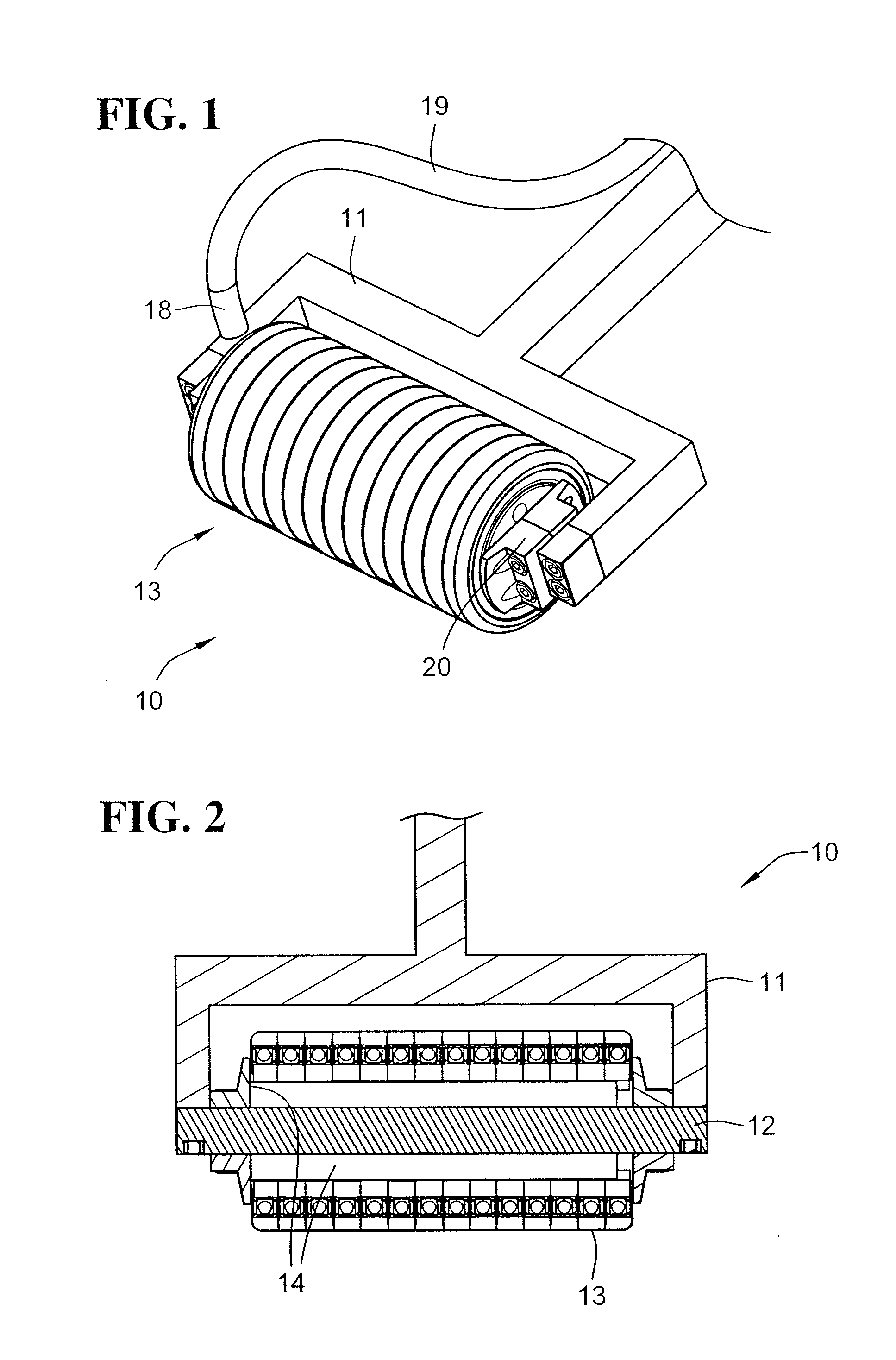Compaction roller for a fiber placement machine
a technology of fiber placement machine and compaction roller, which is applied in the direction of paper hanging, soldering apparatus,auxillary welding devices, etc., can solve the problems of difficult to apply even pressure to parts lacking radial symmetry, insufficient movement of segments on the single compaction surface, and inability to help parts with radial symmetry
- Summary
- Abstract
- Description
- Claims
- Application Information
AI Technical Summary
Benefits of technology
Problems solved by technology
Method used
Image
Examples
Embodiment Construction
[0038] As mentioned above, it is very important to thoroughly compact a part made from composite materials and in particular from one or more laminae of composite material. These materials are typically, but not necessarily, made from continuous carbon fibers, or other fibers, in a matrix of an epoxy or other thermoset or thermoplastic resin. The tools in which or onto which the materials are deposited may be heated even while filament winding, lay-up or other deposition is taking place. Heating at a moderate temperature warms the materials and makes the resin more pliable and possibly more tacky, allowing for better consolidation of the material and more conformance to the tool. This helps to make a stronger part by insuring better contact between layers of material, to minimize voids in a fabricated part, and to minimize the size of any avoids that may remain afterwards.
[0039] Embodiments of the invention are principally in the form of a compaction roller made up of a series of t...
PUM
| Property | Measurement | Unit |
|---|---|---|
| outer diameter | aaaaa | aaaaa |
| outer diameter | aaaaa | aaaaa |
| outer diameter | aaaaa | aaaaa |
Abstract
Description
Claims
Application Information
 Login to View More
Login to View More - R&D
- Intellectual Property
- Life Sciences
- Materials
- Tech Scout
- Unparalleled Data Quality
- Higher Quality Content
- 60% Fewer Hallucinations
Browse by: Latest US Patents, China's latest patents, Technical Efficacy Thesaurus, Application Domain, Technology Topic, Popular Technical Reports.
© 2025 PatSnap. All rights reserved.Legal|Privacy policy|Modern Slavery Act Transparency Statement|Sitemap|About US| Contact US: help@patsnap.com



